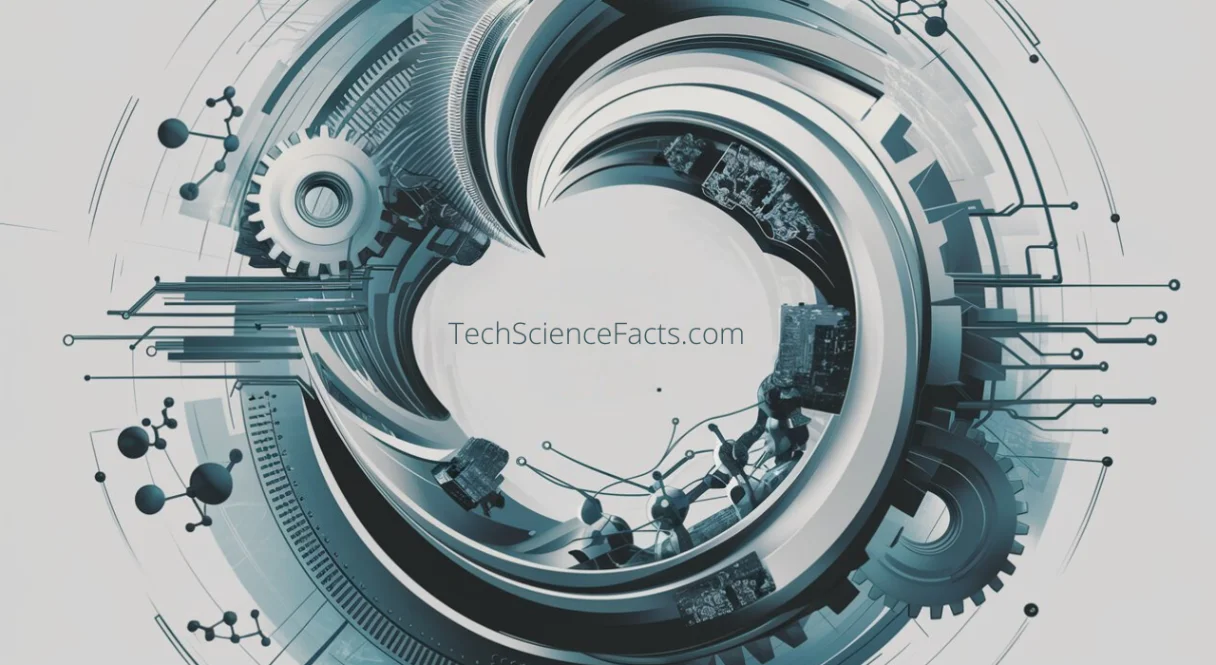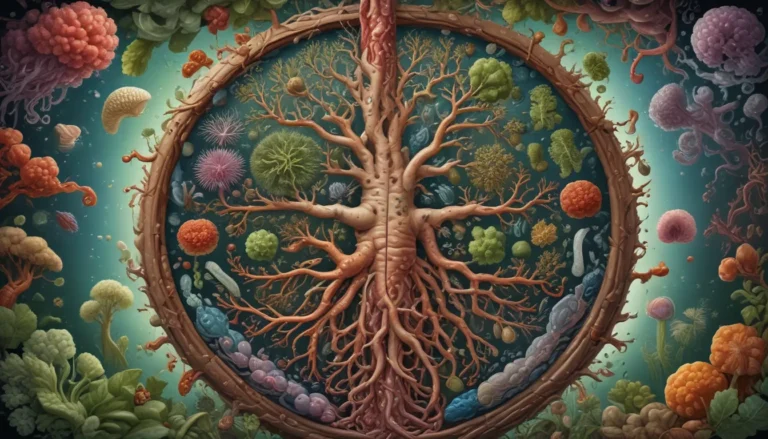A Note About Images: The images used in our articles are for illustration purposes only and may not exactly match the content. They are meant to engage readers, but the text should be relied upon for accurate information.
Welcome to the captivating realm of microevolution, where small-scale changes spark a genetic makeover party within species. It’s like evolution on fast-forward mode, with organisms adapting swiftly to new environments and challenges. Join us as we explore the brilliant adaptability and diversity of life on Earth through mind-blowing facts that will leave you in awe of the wonders of biological evolution.
Unraveling the Mysteries of Microevolution
Microevolution, the process of genetic change within a population, offers a fascinating glimpse into the dynamic nature of evolutionary processes. From alterations in physical traits to shifts in behavior and genetics, these changes occur over relatively short periods of time, showcasing the incredible adaptability of living organisms.
The Marvel of Speciation Through Microevolution
One of the most remarkable aspects of microevolution is its potential to lead to the formation of new species. Through the gradual accumulation of genetic changes, distinct species can emerge, driving the diverse tapestry of life on our planet.
Witnessing Evolution in Real-Time
Unlike macroevolution, which unfolds over extended periods through the fossil record, microevolutionary changes can be observed and studied in living populations. This real-time insight into the mechanisms of evolution offers valuable knowledge for scientists exploring the mysteries of genetic variation.
The Power of Natural Selection in Driving Microevolution
Natural selection, a cornerstone of microevolution proposed by Charles Darwin, plays a pivotal role in shaping the genetic makeup of populations. By favoring individuals with advantageous traits, natural selection gradually increases the prevalence of these traits, contributing to the ongoing evolution of species.
Genetic Mutations: The Catalysts of Change
Genetic mutations serve as the wellspring of new genetic variation within populations. Some mutations provide a selective advantage, while others may be neutral or detrimental. This genetic diversity fuels the process of microevolution, enabling organisms to adapt and thrive in ever-changing environments.
Rapid Adaptation in the Face of Environmental Changes
When confronted with abrupt environmental shifts, populations can undergo rapid microevolutionary responses. This remarkable ability to adapt quickly demonstrates the dynamic nature of evolution and underscores the resilience of life in challenging circumstances.
Embracing Diversity Across Different Populations
Microevolutionary patterns can manifest diversely in geographically distinct populations, leading to the development of genetic differences and the formation of unique subspecies. This variation highlights the nuanced interplay between genetic changes and environmental factors.
Balancing Genetic Diversity and Selective Pressures
While microevolution can enhance genetic diversity within a population, factors such as genetic drift and selective pressures may also lead to the loss of genetic variation over time. This delicate balance underscores the critical importance of genetic diversity for the long-term survival of species.
Harnessing the Influence of Human Activities
Human-induced factors, including habitat destruction, pollution, and selective breeding, can significantly impact microevolutionary processes. These anthropogenic influences alter natural selective pressures and disrupt the evolutionary trajectories of species, highlighting the interconnectedness between human actions and biological evolution.
Practical Applications of Microevolution in Agriculture and Medicine
The understanding of microevolutionary processes has practical implications in agriculture and medicine. From developing pest-resistant crops to studying antibiotic resistance and vaccine development, microevolution offers valuable insights that inform key practices in these crucial fields.
Unlocking the Secrets of Phenotypic Variations
Microevolutionary changes at the genetic level give rise to observable variations in physical traits among individuals. These phenotypic differences play a vital role in the adaptation and survival of organisms in their respective habitats, showcasing the intricate interplay between genetics and environment.
Facing the Challenge of Antibiotic Resistance
The emergence of antibiotic-resistant bacteria through microevolutionary processes poses a significant challenge in the healthcare sector. Responsible antibiotic usage and comprehensive understanding of evolutionary mechanisms are essential in combating this growing threat.
Embracing the Role of Gene Flow in Microevolution
Gene flow, the exchange of genes between populations, introduces new genetic variation that influences microevolutionary processes. This genetic exchange fosters diversity, prevents genetic isolation, and shapes the evolutionary trajectories of populations.
Illuminating the Influence of Sexual Selection
Sexual selection, a form of natural selection, drives the evolution of traits related to mate choice and competition within populations. This selective pressure contributes to the development of elaborate secondary sexual characteristics and plays a crucial role in shaping microevolution.
Adapting to Changes in Resource Availability
Shifts in resource availability, such as food and habitat, exert selective pressures on populations, fostering microevolutionary changes. This adaptive process enables organisms to exploit new ecological niches and thrive in diverse environments.
The Enduring Legacy of Microevolution
Microevolutionary changes continue to shape the genetic landscapes of living populations, showcasing the ongoing process of adaptation and survival in the natural world. This dynamic evolution reflects the interconnectedness of all life forms and underscores the remarkable capacity of species to evolve over time.
Conclusion: Exploring the Depths of Microevolution
In conclusion, microevolution unveils a captivating world of genetic evolution where organisms adapt, survive, and thrive in response to changing environments. The intricate mechanisms of genetic variation, natural selection, and environmental influences underscore the beauty and complexity of evolutionary processes. From the practical applications in agriculture and medicine to the profound impact of human activities on evolutionary trajectories, microevolution offers a wealth of insights into the ever-evolving tapestry of life on Earth.
FAQs: Illuminating Facts About Microevolution
-
What is the essence of microevolution?
Microevolution encompasses small-scale genetic changes within populations over relatively short periods, driving the diversification of traits and species. -
How does microevolution differ from macroevolution?
Microevolution focuses on genetic changes within populations, while macroevolution encompasses larger evolutionary changes leading to the formation of new species over extended time scales. -
Can microevolution lead to the formation of new species?
While microevolutionary changes occur within species, the accumulation of genetic differences over time can contribute to the emergence of new species through macroevolutionary processes. -
Is microevolution influenced by environmental factors?
Environmental factors such as habitat loss and resource availability play a significant role in shaping microevolutionary changes, driving adaptations and survival in changing conditions. -
What role does natural selection play in microevolution?
Natural selection serves as a key driver of microevolution, favoring individuals with advantageous traits for survival and reproduction, thereby shaping the genetic composition of populations. -
Are humans subject to microevolution?
Yes, humans are also subject to microevolutionary forces, as changes in our genetic makeup over time enable us to adapt to different environments and evolve beneficial traits. -
Are the principles of microevolution widely accepted in the scientific community?
Yes, microevolution is widely accepted in the scientific community, supported by research, genetic evidence, and empirical observations of evolutionary phenomena. -
Can microevolution occur rapidly?
Microevolution can occur relatively quickly in response to strong environmental pressures and short generation times of organisms, showcasing the dynamic and adaptive nature of evolutionary changes. -
What are some practical applications of microevolution?
Microevolutionary processes have practical implications in fields such as medicine, agriculture, and conservation, informing practices like breeding pest-resistant crops, studying antibiotic resistance, and conserving endangered species.
Embark on a journey into the marvels of microevolution, where genetic evolution unfolds in a symphony of adaptation, diversity, and survival. Explore the intricate mechanisms driving evolutionary processes and uncover the profound interconnectedness of all life forms in nature’s ever-changing landscape. Join us in celebrating the beauty and complexity of genetic evolution and the astonishing capacity of species to thrive and evolve in a world of constant change and discovery.






